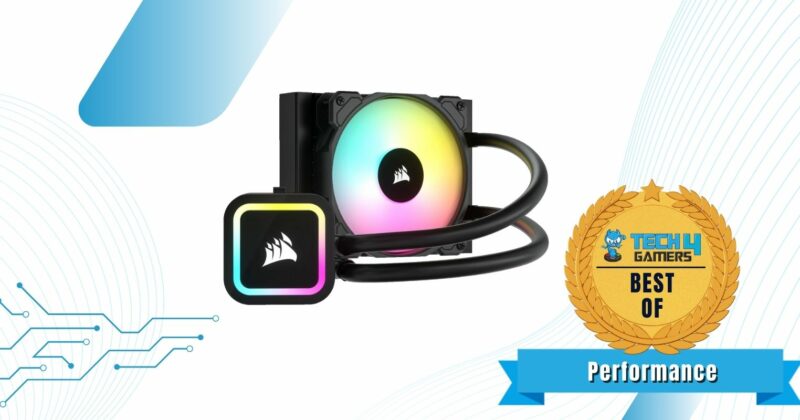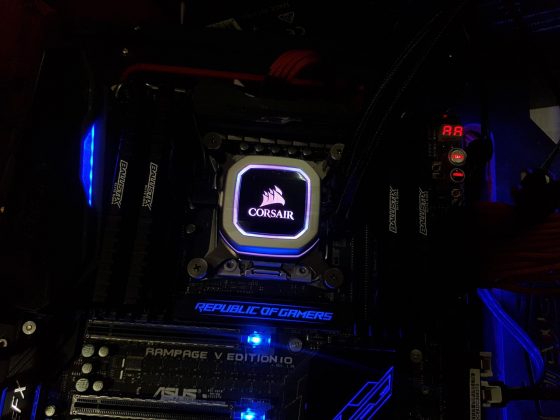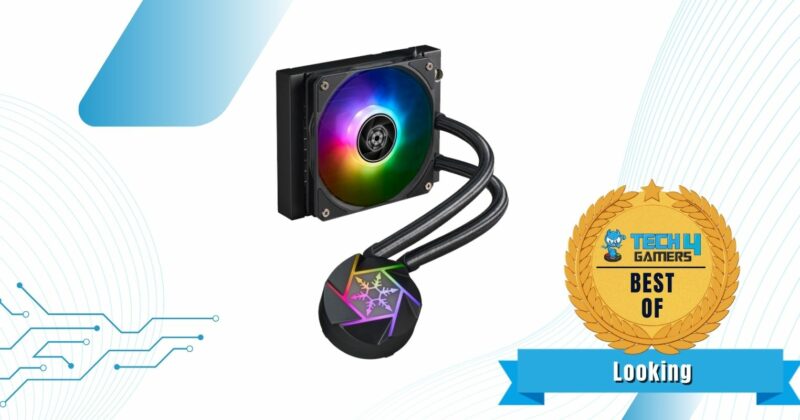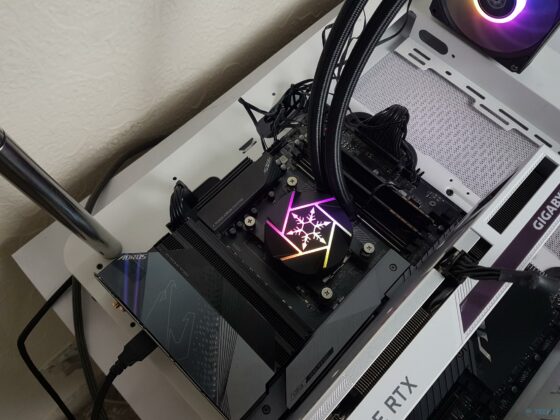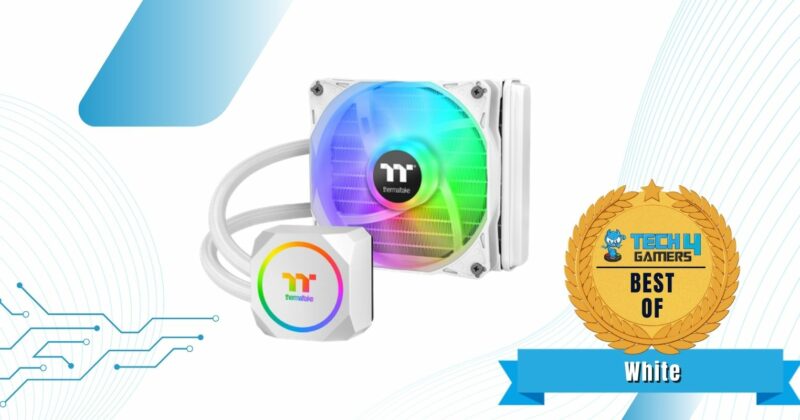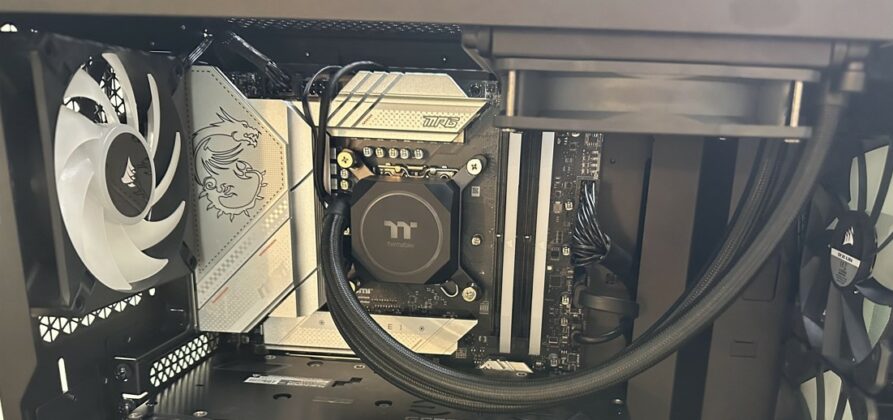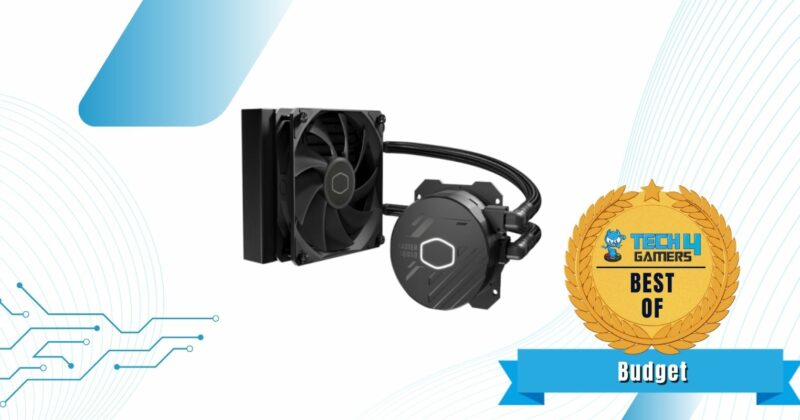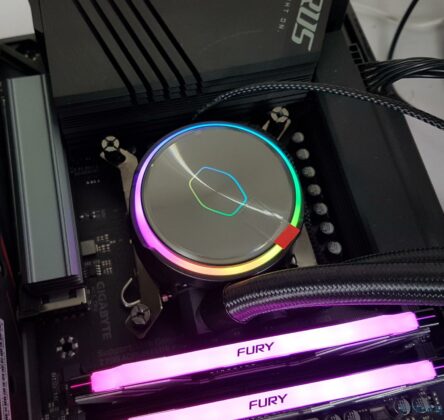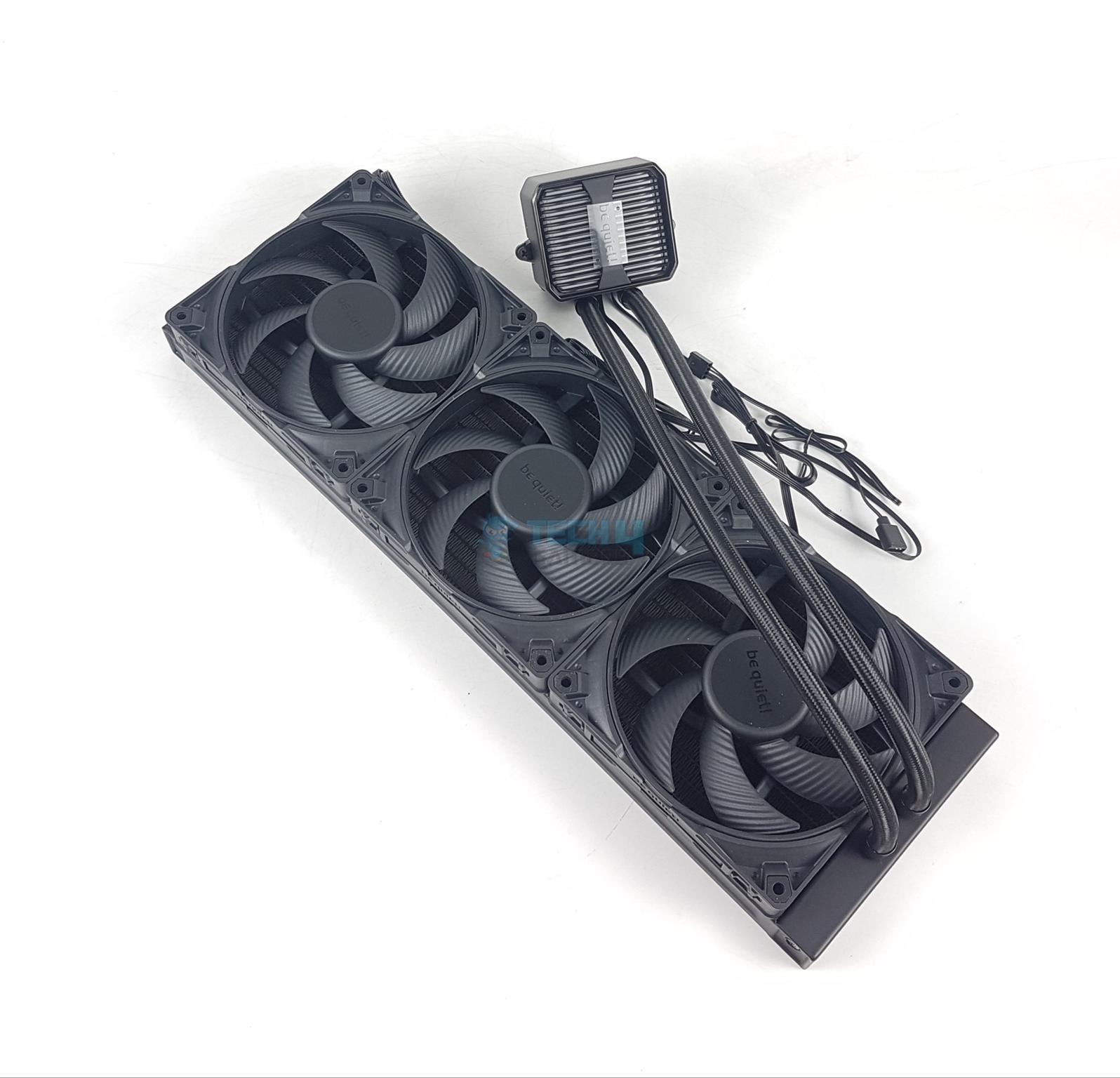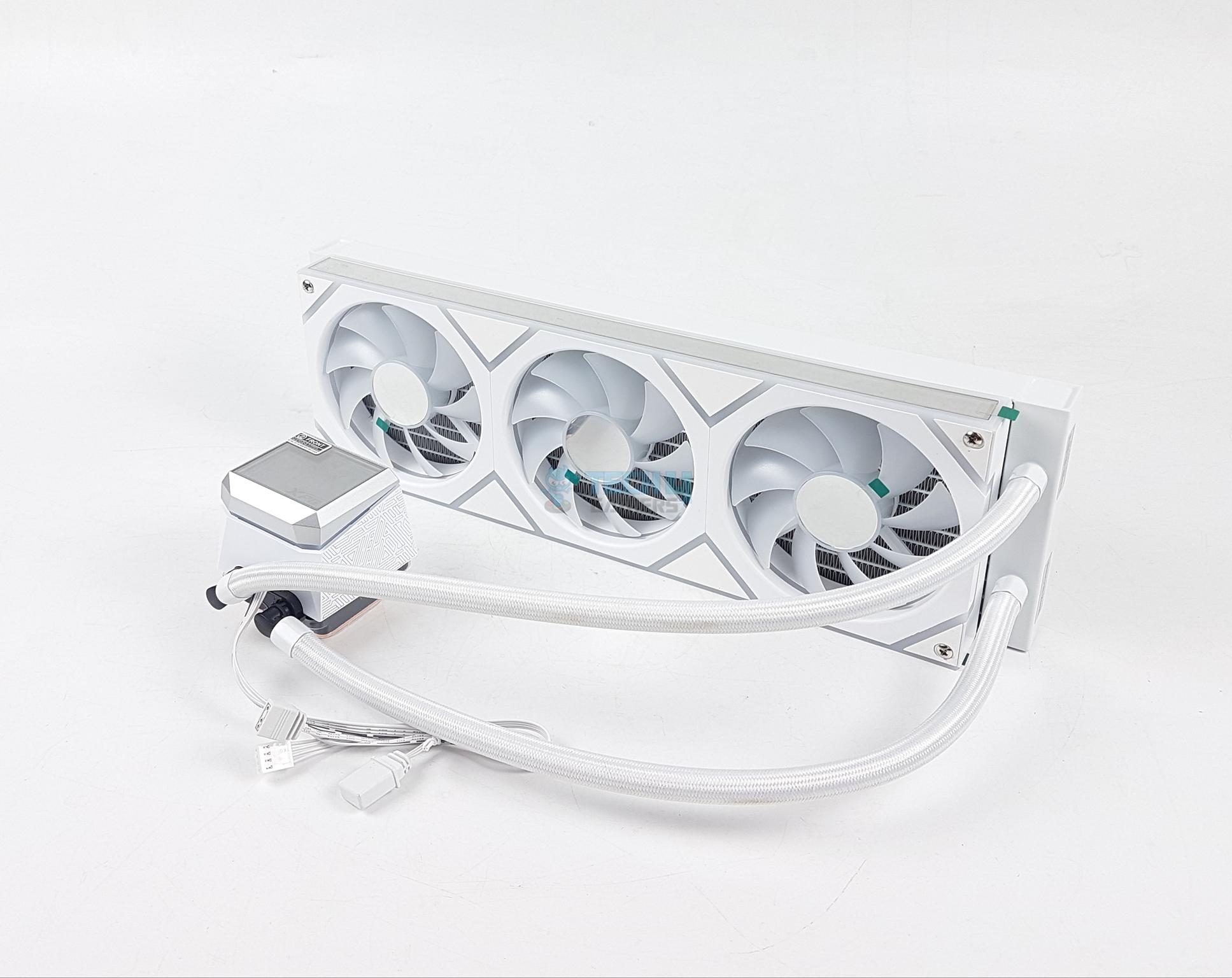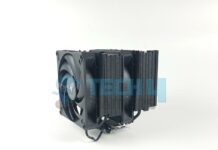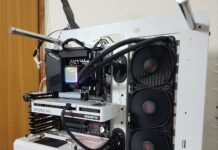AIO coolers are a remarkable source of cooling for CPUs, especially for compact PC builds. If you’re utilizing an SFF PC case, you most likely don’t have the space to install a larger air cooler. Therefore, after thoroughly testing multiple products, we have put together a list of 120mm AIO coolers that will be a perfect fit for any build.
Here is a table and comparison chart showing our 120mm AIO coolers.
Last Updated:
- October 25, 2024: After testing and reviewing some more coolers, the Thermalright Aqua Elite 120 V3’s price-to-performance ratio and overall features have really impressed us. That’s why we’ve awarded it the best overall 120mm AIO title.
Want a bigger size? Our team has also tested these:
Best 120mm AIO Coolers
Here are our recommendations for the top 120mm AIO CPU Coolers:
- Best Overall: Thermalright Aqua Elite 120 V3
- Best Performance: Corsair iCUE H60x RGB Elite
- Best Looking: SilverStone VIDA 120 S
- Best White: Thermaltake TH120 A-RGB Snow Edition
- Best Budget: Cooler Master MasterLiquid 120L Core
Thermalright Aqua Elite 120 V3
Best Overall 120mm AIO CPU Cooler

Specifications: Fan: 1x 120mm fan | Fan Speed: 1,500RPM | Noise Level: 25.6dB(A) | Tube Length: 400mm | RGB: Yes | Dimensions: 120 x 120 x 25mm | Socket Support: Intel: LGA 1700, 1200, 115X, 2011, 2066 AMD: AM4, AM5
Pros
- Beautiful aesthetics
- Outstanding cooling performance
- Decent overclocking potential
- Robust build quality
- Low noise 120mm fan
- Long tube offers more installation options
- Remarkable pricing
Cons
- Lower warranty period
Are you running your PC in an SFF chassis and want better thermals? If so, the Thermalright Aqua Elite 120 V3 AIO cooler will be your best friend, providing outstanding cooling performance, drop-dead gorgeous aesthetics, and a robust build quality meant to last. The first thing I noticed during my testing was the cooler’s low 25.6dB(A) noise levels. While I don’t recommend pairing it with a flagship CPU, you can make the pairing if you keep the CPU at base clock speeds.
Now, moving to its looks, I instantly fell in love with the AIO cooler’s unique pump design. After the easy installation, I was mesmerized by the customizable RGB lighting over the fans and the pump, making the cooler look like a lit-up Christmas tree. The best part out of all of this? The Aqua Elite 120 V3 is affordable, so you don’t have to spend too much on this component. I would love to call it a jack of all trades, but the lower 3-year warranty period is a slight downer despite the robust build quality. Other than that, there’s honestly nothing to scoff at with this AIO cooler.
What Makes It The Best Overall 120mm AIO CPU Cooler?
The Thermalright Aqua Elite 120 V3 AIO cooler offers everything you could possibly require from a small form-factor liquid CPU cooler: remarkable thermals, incredible aesthetics, robust build quality, and a low price to seal the package. The AIO’s fan also doesn’t produce much noise, and the longer tube makes installation easier. Therefore, all these features and performance make it the best overall 120mm AIO CPU cooler.
| Performance: 9/10 | Value: 9/10 |
| Features: 9/10 | Design: 9/10 |
Corsair iCUE H60x RGB Elite
Best Performance 120mm AIO CPU Cooler
Specifications: Fan: 1x 120mm SP120 Fan | Fan Speed: 400 — 1,500RPM | Noise Level: 28dB(A) | Tube Length: 330mm | RGB: Yes | Dimensions: 157 x 120 x 27mm | Socket Support: Intel: LGA 115X, 1200, 1700, 2066 AMD: AM4, AM5
Pros
Cons
The Corsair iCUE H60x RGB Elite comes with a 1x 120mm SP120 fan running at 1,500RPM speeds, which provides the bulk of its cooling performance. During my gaming tests, the cooler provided decent overclocking potential while keeping the CPU’s temperatures around 60°C to 65°C. Moreover, the radiator is made of aluminum, and the surface is optimized for providing better heat transfer through fins. One thing I disliked was the shorter 330mm tube length, but it should be fine with SFF cases.
As apparent from the name, the Corsair H60x RGB Elite 120mm AIO cooler has captivating RGB lighting, which has a lot of customization potential. Through the iCUE software, you can access and customize various functionalities of this AIO cooler. I loved the cooler’s dark pump and tube aesthetics.
What Makes It The Best Performance 120mm AIO CPU Cooler?
Overall, the Corsair H60x RGB Elite lives up to its reputation and efficiently handles high thermal load, preventing throttling. Corsair smoothly integrated looks with high-end performance in this 120mm AIO cooler through customizable RGBs. Therefore, it is the best performance 120mm AIO CPU cooler.
| Performance: 10/10 | Value: 7/10 |
| Features: 8/10 | Design: 8/10 |
SilverStone VIDA 120 Slim
Best Looking 120mm AIO CPU Cooler
Specifications: Fan: 1x 120mm VIDA fan | Fan Speed: 300 — 1,800RPM | Noise Levels: 34dB(A) | Tube Length: 400mm | RGB: Yes | Dimensions: 120 x 154 x 22mm | Socket Support: Intel: 115X, 1200, 1700, 2011, 2066 AMD: AM4, AM5
Pros
Cons
The SilverStone VIDA 120 Slim AIO cooler comes with a 1x 120mm VIDA fan running at incredible 1,800RPM speeds. Furthermore, with the 22mm radiator design, the cooler doesn’t bottleneck most CPUs at full load. However, I wouldn’t recommend overclocking while using this cooler. The cooler provides a sturdy build quality with a pure copper baseplate and an aluminum radiator with a clean finish. The radiant build quality also improves the cooler’s thermal capabilities and aesthetics.
Talking about the aesthetics, the SilverStone VIDA 120 Slim reinforces a polished black design, which features just the right amount of RGB. Apart from the RGB fan, the cooler boasts unique design elements on the water block, allowing it to stand out from the contemporary designs that have flooded the market.
What Makes It The Best Looking 120mm AIO CPU Cooler?
From exceptional cooling to uncompromised build quality, SilverStone seems to have spared no expense with the cooler’s feature set. That, coupled with its aesthetically pleasing design characteristics, makes it the best looking 120mm AIO CPU cooler.
| Performance: 8/10 | Value: 8/10 |
| Features: 8/10 | Design: 10/10 |
Thermaltake TH120 A-RGB Snow Edition
Best White 120mm AIO CPU Cooler
Specifications: Fan: 1x 120mm | Fan Speed: 1,500RPM | Noise Levels: 28.2dB(A) | Tube Length: 400mm | RGB: Yes | Dimensions: 153 x 120 x 27mm | Socket Support: Intel: LGA 1700, 1200, 115X AMD: FM2, FM1, AM5, AM4, AM3+, AM3, AM2+, AM2
Pros
Cons
The Thermaltake TH120 A-RGB Snow Edition AIO provides decent cooling performance with its 1x 120mm fan running at 1,500RPM speeds. My gaming tests at 1440p showcased decent thermal results, causing no form of bottlenecking with the CPU. Thermaltake has gone with a 27mm thick radiator, which is fairly standard for a 120mm AIO cooler. The water block itself is made of copper, and I personally liked the 400mm-long rubber tubing.
Moving to its aesthetics, the Thermaltake TH120 A-RGB Snow Edition has a vibrant white color throughout its design. Moreover, the RGB pump and fans complement the white, making it shine in an all-white PC. I also loved the RGB customizations.
What Makes It The Best White 120mm AIO CPU Cooler?
We have crowned the Thermaltake TH120 A-RGB as the best white 120mm AIO CPU cooler for its well-constructed white design and decent cooling performance with almost no fan noise.
| Performance: 8/10 | Value: 8/10 |
| Features: 8/10 | Design: 10/10 |
Cooler Master MasterLiquid 120L Core
Best Budget 120mm AIO CPU Cooler
Specifications: Fan: 1x 120mm | Fan Speed:1,750RPM | Noise Levels: 27.2dB(A) | Tube Length: 400mm | RGB: Yes | Dimensions: 157 x 119.6 x 27.2mm | Socket Support: Intel: LGA 1700, 1200, 115X AMD: AM4, AM5, AM3+, AM3, AM2+, AM2, FM2+, FM2, FM1
Pros
- Remarkable value
- Low fan noise
- Decent thermal performance
- Sturdy build quality
- Subtle design
Cons
- Low overclocking potential
- 3 year warranty
- No RGB fan
The Cooler Master MasterLiquid 120L Core AIO cooler showcases decent thermal performance even with its budget price. For example, during my 1080p gaming tests, the cooler did not thermal throttle my test bench and kept the temperatures at bay. Aside from its cooling performance, I expected the AIO’s build quality to be subpar, but I was proven wrong. To explain, the cooler utilizes an aluminum radiator with a copper baseplate for better cooling potential. Furthermore, I loved that the fans have anti-vibration material.
The Cooler Master MasterLiquid 120L Core has a subtle design with not much going on. Because it’s a budget CPU cooler, the fan doesn’t have any RGB, which might leave many gamers wanting more.
What Makes It The Best Budget 120mm AIO CPU Cooler?
The Cooler Master MasterLiquid 120L Core provides superb value for money, almost no fan noise, and has a subtle design, perfect for most SFF cases. These reasons point us to making it the best budget 120mm AIO CPU cooler.
| Performance: 8/10 | Value: 10/10 |
| Features: 8/10 | Design: 8/10 |
How We Tested & Picked These 120mm AIO CPU Coolers
Selecting the best 120mm AIO is a job not well-suited to the faint-hearted since you’ll need to consider several factors. For your convenience, we’ve mentioned and explained a couple of crucial points to go over while you choose the AIO cooler that suits you best.
- Performance: An essential aspect of any cooler, be it an AIO or air cooler, is the relative performance it offers. For AIOs, the pump, FPI count, fan, and radiator, to name a few crucial components, contribute to the overall cooling performance of an AIO.
- Budget: Every AIO tends to introduce itself at a unique price point, determined by its cooling performance, build quality, general design, and aesthetics. Therefore, it’s essential to have a specific budget in mind. Therefore, we looked into all sorts of prices for the coolers we selected.
- Efficiency: Every AIO differs from the others in terms of working efficiency. It’s essential to choose an AIO solution that has the capacity to cool your entire PC down alongside the CPU, of course, without inducing thermal throttling to maintain satisfactory temperatures.
- Aesthetics & Build Quality: Manufacturers tend to distinguish their respective best 120mm AIO cooling solutions by offering their unique take on the AIO’s aesthetics and build quality. Some brands might opt for a more premium construction, leading to a higher price tag. In contrast, others favor a slightly unexotic or practical approach for a budget option.
Frequently Asked Questions
Yes, if you prefer a maintenance-free and silent experience, then 120mm AIOs are totally worth it.
Buying a 120mm AIO is good if you require enhanced performance with ample clearance. Similarly, if you want a budget-friendly option that is also quite durable, then going with air coolers is the right choice.
Yes, it is safe to say each and every one of our selected 120mm AIOs can handle CPUs with TDPs ranging all the way up to 300W. Running a 95W CPU should pose no serious threat to any 120mm AIO.
Yes, a push-pull configuration is worth it.
Looking for more options?
Recent Updates
- April 21, 2024: Some formatting changes to improve readability.
- November 6, 2023: Few text and grammar changes to improve readability. One product was changed.
- August 18, 2023: Minor text changes. No products were changed.
- June 17, 2023: Minor text changes. No products were changed.
- June 14, 2023: Two products were out of stock, so we have changed them with equally good replacements.
- June 7, 2023: Minor text changes. No products were changed.
- May 25, 2023: Minor text changes. No products were changed.
Thank you! Please share your positive feedback. 🔋
How could we improve this post? Please Help us. 😔
Feedback By:
David Cho
[CPU Coolers & RAM Expert]
Hayyan Serwer is a tech enthusiast, with a love for PC building and article writing. Hayyan specializes in writing about CPU coolers and RAM kits. Hayyan has been familiar with the tech industry for over half a decade now, and has now stepped into providing quality reviews for the latest and greatest tech.
Get In Touch: hayyan@tech4gamers.com


 Threads
Threads





